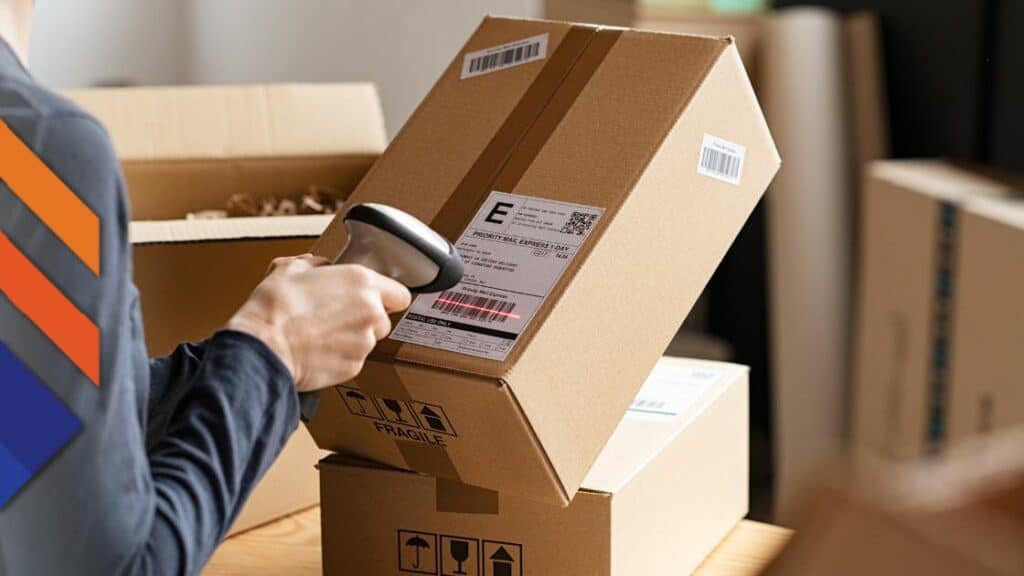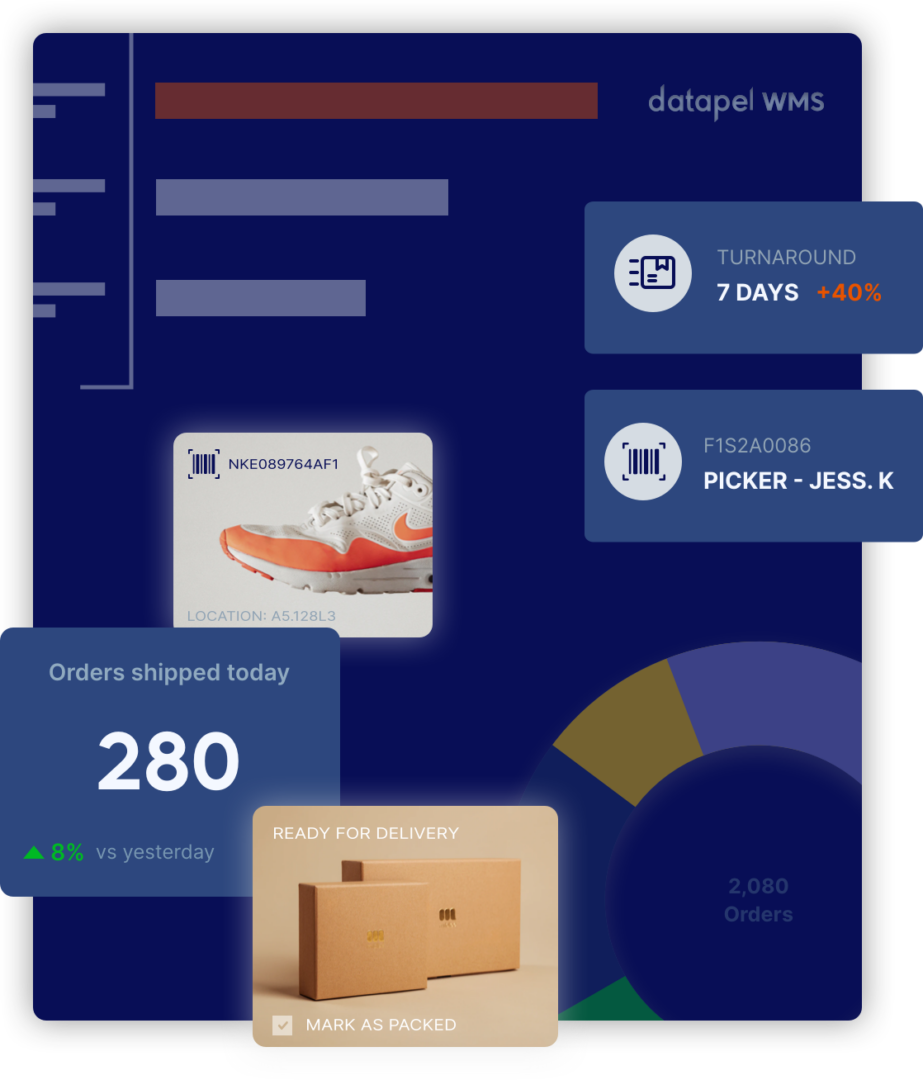Supercharge Your Stock Replenishment Process for Maximum Efficiency
Contents
Stock replenishment is a delicate balancing act between stocking enough inventory to meet demand and avoiding excessive stock levels. Failing to replenish inventory properly can be the result of a lack of suitable tools, unpredictable market conditions, and a dearth of performance measurements.
To ensure a smooth and efficient picking process while avoiding stockouts and inaccurate stock counts, warehouse managers can employ a range of best practices and tools.
What’s the Objective of Stock Replenishment?
The objective of managing the replenishment process in a warehouse is to guarantee that each picking location maintains the optimal quantity of products, facilitating a smooth and efficient picking operation.
This process involves transferring inventory from upstream reserve storage locations to downstream primary picking storage locations.
An empty picking slot is equivalent to an empty shelf in a store, resulting in lost sales opportunities. For the warehouse, inadequate replenishment practices lead to inventory shortages, inaccurate stock counts, and a decline in service levels.
To avoid these pitfalls, warehouse managers can implement various strategies and utilise effective tools to optimise the restocking process and enhance overall efficiency.
How to Optimise the Replenishment Process
Install a Real-Time Warehouse Management System (WMS)

A real-time WMS is the cornerstone of an optimised stock replenishment process. By continuously monitoring total order quantities and stock availability, a WMS can detect the need to replenish pick locations in real-time.
This proactive approach ensures that stocks are requested before the next wave of orders arrives, preventing early or late refills.
Early replenishment occurs when restocking happens before the generated pick lists have been executed, while late restocking takes place when the next batch of picking occurs before the replenishment team has restocked the pick location.
To achieve optimal results, it is crucial to establish the correct process sequencing.
Enhance Efficiency with Barcode Scanners, Mobile Computers, and RFID

Leveraging warehouse technologies such as barcode scanners, mobile computers, and RFID can significantly enhance the replenishment process and improve accuracy.
Barcode scanners provide a cost-effective and efficient alternative to manual data entry, reducing human errors in stock counts and increasing overall efficiency.
By scanning barcodes containing SKU information, warehouse staff can expedite the restocking process, resulting in time savings and improved productivity.
When integrated with a WMS, mobile computers and barcode scanners enable full mobile replenishment operations. This integration facilitates seamless wireless data transfer, eliminating the need for fixed workstations and reducing walking times.
Additionally, the use of RFID tags on inventory streamlines the replenishment process by enabling the simultaneous reading of multiple tags. Real-time inventory tracking becomes feasible with a minimal margin of error.
Automate Your Stock Replenishment Processes
Managing restocking is a critical aspect of warehouse operations, and automating this process can greatly enhance efficiency and accuracy. By implementing automation solutions, you can streamline your stock replenishment processes, reduce manual errors, and ensure optimal stock levels.
Benefits of Automation
Automating your stock refilling processes offers several advantages over manual methods. Here are some key benefits:
Enhanced Accuracy
Automation minimises the risk of human errors, such as incorrect stock counts or misplaced orders. By relying on automated systems, you can ensure accurate replenishment and maintain optimal inventory levels.
Improved Efficiency
Manual stock refilling can be time-consuming and labour-intensive. Automation enables faster and more efficient processes, allowing your warehouse team to focus on more value-added tasks.
Real-time Insights
Automated systems provide real-time visibility into inventory levels, demand patterns, and lead times. This data empowers you to make informed decisions and optimise your replenishment strategies.
Reduced Stockouts and Overstocking
Automation helps prevent stockouts by triggering replenishment orders based on predefined thresholds. It also prevents overstocking by aligning restocking with actual demand, minimising excess inventory costs.
According to a survey by Zebra Technologies, 70% of organisations plan to increase their investment in automation for inventory management and restocking processes. This highlights the growing trend towards adopting technology solutions for improved efficiency.
Set Realistic Key Performance Indicators (KPIs)

Establishing realistic and challenging KPIs is essential for measuring performance and keeping employees motivated. Several fundamental KPIs can effectively measure the replenishment process:
Time
This KPI quantifies the average time spent per pallet moved during the replenishment process. To calculate it, divide the total time taken to move each pallet from the reserve storage area to the forward pick area by the total number of pallets moved.
Productivity
This KPI measures the replenishment process’s productivity by dividing the total number of pallets moved by the total number of labour hours worked.
Accuracy
Assess the accuracy of the replenishment process by dividing the number of pallets moved correctly by the total number of pallets moved.
Other Tips for Optimising the Stock Replenishment Process
Consider the following additional strategies to further optimise your stock replenishment process:
Direct to Pick Face
Coordinate delivery quantities with suppliers to enable the direct movement of products from the inbound section to the pick face. This eliminates unnecessary processes, saving time, effort, and warehouse space.
Optimise Pick Faces without a WMS
When a WMS is not in place, design pick faces accommodating the optimal quantity of products based on predicted daily sales. Prompt staff manually to identify the refilling quantity in the absence of automated systems.
Increase Rack Capacity
If a specific SKU experiences high demand requiring frequent restocking throughout the day, consider using larger or multiple picking locations. This reduces the frequency of restocking and minimises the risk of restocking errors.
Prioritise Safety
Real-time restocking can lead to simultaneous picking and replenishment activities, increasing the risk of accidents involving forklift trucks and pedestrian pickers. To mitigate safety hazards, allocate multiple picking locations for the same SKU, enabling picking during restocking.
Alternatively, schedule activities at different times to separate the tasks.
Conclusion
You can achieve maximum efficiency by optimising your stock replenishment process using either technology-driven approaches or lean operations. Warehouse technologies, particularly early-stage technologies, can be a worthwhile investment in this rapidly evolving industry.
However, if technology adoption poses concerns, leaner operational strategies can still yield positive outcomes up to a certain point. Implementing these best practices will enable you to achieve an efficient replenishment process, leading to a successful and profitable warehouse operation.

In my role, I oversee the development of insightful blogs that delve into the intricacies of warehouse management. Each piece reflects my dedication to empowering businesses through informative content. Through my team’s extensive experience in the industry, we aim to bring clarity to the complexities of WMS, helping businesses make informed decisions.
Join me on a journey through the ever-evolving landscape of warehouse technology as we explore the latest trends, industry insights, and practical tips to streamline your operations. Feel free to connect, and let’s embark on a collaborative exploration of how WMS can redefine your business efficiency.
Cheers to innovation, efficiency, and the exciting world of warehouse management!







